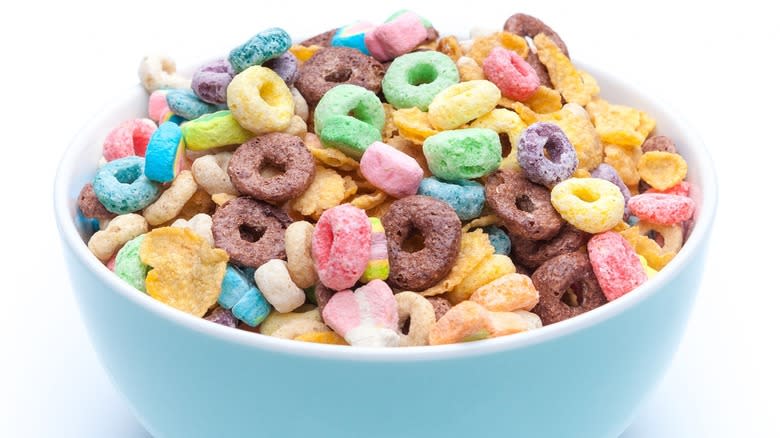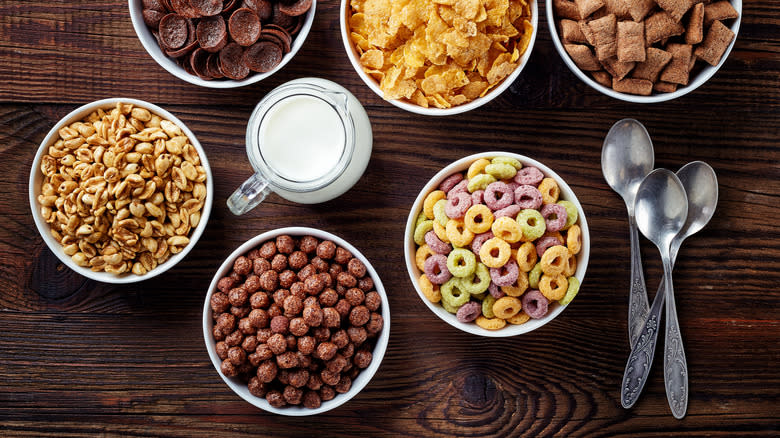How Cereal Became So Sugary

- Oops!Something went wrong.Please try again later.
The real reason breakfast cereal was invented in the late 19th and early 20th centuries was to be a bland, virtuous alternative to heavy breakfast spreads. Dr. John Harvey Kellogg's Corn Flakes, which contained zero traces of sugar, epitomized this era. Companies like Kellogg's and Post eventually realized smart marketing held the key to cereal supremacy. They adorned their products with vibrant packaging, bizarre cereal mascots, and catchy slogans. But when, exactly, did cereal transform into a nosh that gave consumers a saccharine jolt of a.m. energy?
Consider the introduction and metamorphosis of Sugar Smacks (now known as Honey Smacks) in the 1950s. Children were charmed by the cereal's sheer sweetness, and parents couldn't resist their pleas. Television, a burgeoning medium at the time, played a pivotal role in grabbing audiences' attention. Animated characters like Frosted Flakes' Tony the Tiger and Rice Krispies' gnome trio — Snap, Crackle, and Pop — leaped from screens into living rooms, further cementing the grain's place in American culture. All the while, people latched onto the ads' messaging, which promised a fulfilling bowl of goodness to kickstart the day.
Read more: The Most Unique Chip Flavors Ever To Grace Store Shelves
Breakfast Has Never Been Sweeter

As society's perception of nutrition evolved, so did the allure of sugar. At one time, it was seen as an energy source, and many cereals were marketed as a quick, convenient way to fuel the day. As a result, the consumer demand for sweetened cereals only intensified. In the 1960s, for instance, beloved brands like Froot Loops and Lucky Charms made their debuts with eye-catching, palate-pleasing marshmallows and colorful shapes. Breakfast became a sensory adventure, and aisles teemed with options that seemed more like confections.
As the world entered the 21st century, however, health concerns arose as sugar's detrimental effects became more evident. Governments imposed regulations, and consumers sought more wholesome alternatives, such as oatmeal, granola, and smoothies.
Today, cereals are a battleground between the sweet and the sensible. Traditional options happily coexist with sugar-reduced, whole-grain products, yet the sugary cereals endure — a true testament to the power of marketing, nostalgia, and a nation's enduring love affair with all things sweet. Whether you prefer Cheerios, Corn Flakes, and Grape Nuts or veer toward the likes of Oreo O's, Reese's Puffs, and Fruity Pebbles, breakfast will likely remain the most important meal of the day.
Read the original article on Mashed.

